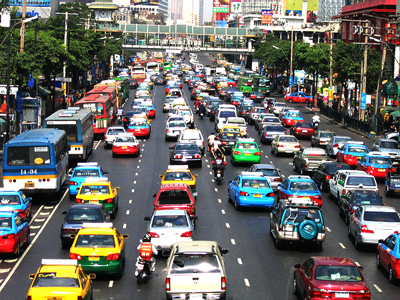
Nay Pyi Daw, May 29: As India sought to expedite its infrastructural projects in Myanmar, PM Manmohan Singh and President U Thein Sein for the first time set a deadline, 2016, for trilateral road connectivity which will make it possible to drive right up to Thailand from India via Myanmar. After the PM's "restricted" meeting with Thein Sein, who received Singh at his resplendent palace wearing the traditional Burmese gaung baung head gear, foreign secretary Ranjan Mathai announced that "efforts would be made to establish seamless trilateral connectivity by 2016".
Singh, who had a one-on-one with Thein Sein before the delegation talks, said India would undertake the repair of 71 bridges on the Tamu-Kalewa Friendship Road. India had earlier helped Myanmar build this road and the plan now is to link it with a place called Yargyi which will effectively link Moreh in India to Mae Sot in Thailand.
"The two leaders decided that India would undertake upgradation of the Kalewa-Yargyi road segment to highway standard while Myanmar would undertake upgradation of the Yargyi-Monywa stretch to highway standard by 2016," Mathai said, adding that the two leaders welcomed the revival of the Joint Task Force on the trilateral highway. Indian officials believe that this highway will truly become the bridge between India and Asean countries and place it at the heart of India's Look East policy. Myanmar is the only Asean country with which India shares land boundary.
The two leaders decided to constitute a Joint Working Group to determine the technical and commercial feasibility of cross-border rail links and the commercial feasibility of direct shipping links between the two countries. The two sides also discussed the possibility of Indian participation in development of key infrastructure projects like the Dawei port in Myanmar.
However, one of India's most ambitious projects in Myanmar, Kaladan Multimodal Transport Project which will also link India's northeast with the mainland through Sittwe port in Myanmar, barely found a mention in the joint statement. "They expressed satisfaction at the steady progress being made on the Kaladan Multimodal Transit Transport Project," it said. It is well known though that the road component of the project leading to south Mizoram is getting delayed.






Comments
Add new comment